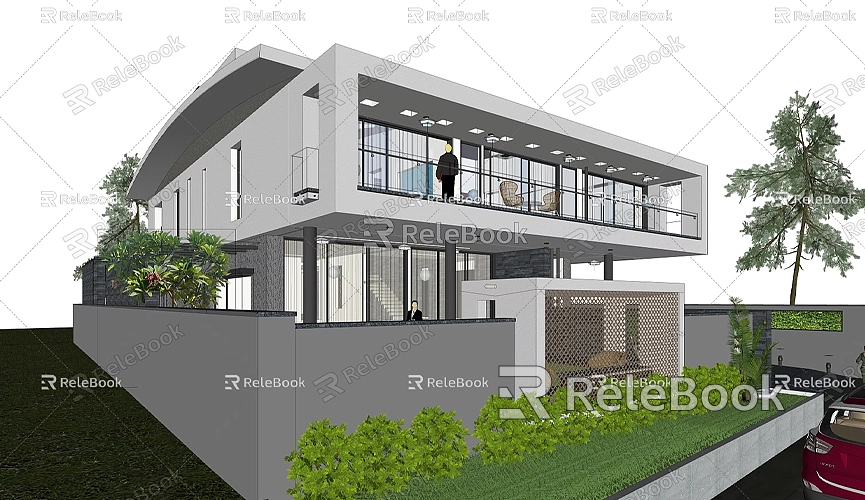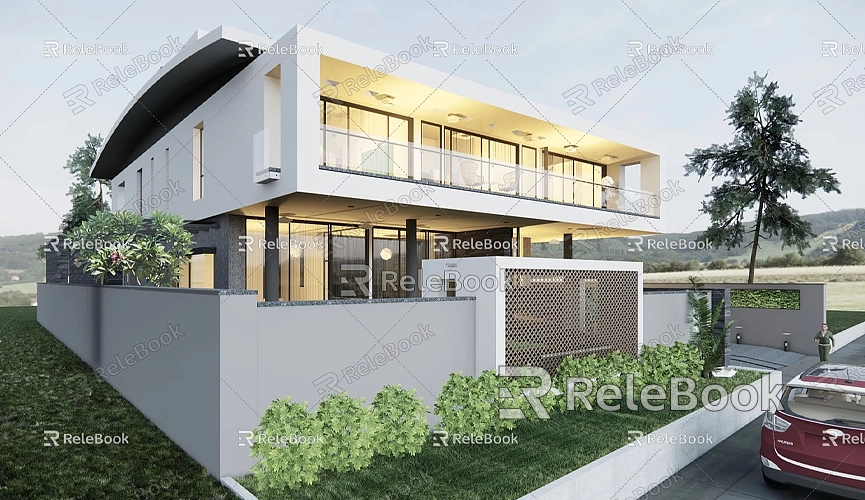How to import a picture on autocad model into sketchup
In design work, importing pictures from an AutoCAD model into SketchUp can greatly enhance your visual effects and make your 3D models come to life. This process not only helps you better understand your design concepts, but also improves overall presentation. This article will guide you through the steps of importing an image from AutoCAD into SketchUp and provide some helpful tips along the way.
Preparation
Before starting the import process, it's essential to ensure that the image format used in AutoCAD is supported by SketchUp. Common image formats such as JPEG, PNG, and BMP are all compatible with SketchUp. These formats ensure smooth importing and maintain good image clarity and quality. Additionally, it’s recommended to use high-resolution images to avoid blurriness caused by stretching when applied as textures.

Processing the Image in AutoCAD
The steps to prepare an image in AutoCAD are relatively simple. First, open the AutoCAD file that contains the image and make sure the image is correctly inserted into the model. If the size or position of the image is off, you can adjust it using AutoCAD's built-in tools. Next, use the EXPORT command to save the image in the desired format (such as JPEG or PNG) and store it in a folder that's easy to locate. Once the image is prepared, you can proceed to SketchUp for the next step.
Importing the Image into SketchUp
After opening SketchUp, you can either create a new project or open an existing one. Next, go to the File menu and choose the Import option. A dialog box will pop up. In this box, select the appropriate file format, such as JPEG or PNG, from the file type dropdown menu.
Browse to the folder where you saved the image, select it, and click Open. The import settings may offer options to adjust the image’s size and position. Once you're satisfied with the settings, click on the drawing area to place the image. You can then drag to adjust the image's size, ensuring it fits well within your model.
Using the Imported Image
Once the image is imported, you can use it in various ways. As a reference image, you can position it behind your 3D model to help guide proportions and details. If you plan to use the image as a texture, you can apply it to surfaces using SketchUp’s Paint Bucket tool. Additionally, right-click on the image and select Entity Info to adjust its transparency or other properties.
Adjusting and Optimizing the Image

After importing, you might encounter minor issues that need adjusting. For instance, if the image doesn't show up, check the layer settings in SketchUp to ensure that the layer containing the image is visible. If the image appears blurry, consider using a higher-resolution version. For size adjustments, you can use the Scale tool to resize the image, ensuring the proportions are appropriate for your model.
Common Issues and Solutions
While importing images is generally straightforward, there are a few common problems that you may encounter:
- Image Not Showing: If the image doesn’t display, it’s often related to layer visibility. Open the Layer Manager to ensure the layer containing the image is visible.
- Image Quality: If the image quality is poor, check the resolution of the image you are using. Using a higher-resolution image typically improves the visual quality.
- Scaling Issues: If you encounter scaling problems with the image, SketchUp allows you to adjust the image’s size and position at any time, ensuring it fits your model properly.
Importing images from AutoCAD into SketchUp not only enhances the visual appeal of your designs but also boosts your workflow efficiency. By following the steps above, you can easily incorporate images as design references or textures. With these tips and tools, you’ll be able to create more polished and professional 3D models.
For designers looking for high-quality 3D textures and models, consider visiting Relebook. They offer a wide range of resources to help you improve the quality and efficiency of your designs. If you need high-quality 3D textures and HDRI for creating models and virtual scenes, you can download them for free from the [Relebook Textures site](https://textures.relebook.com/). If you need beautiful 3D models, you can download them from [Relebook 3D Models](https://3dmodels.relebook.com/). Relebook provides a large selection of premium 3D resources to elevate your design outcomes. By effectively utilizing these resources, your design process will become faster and more efficient.

